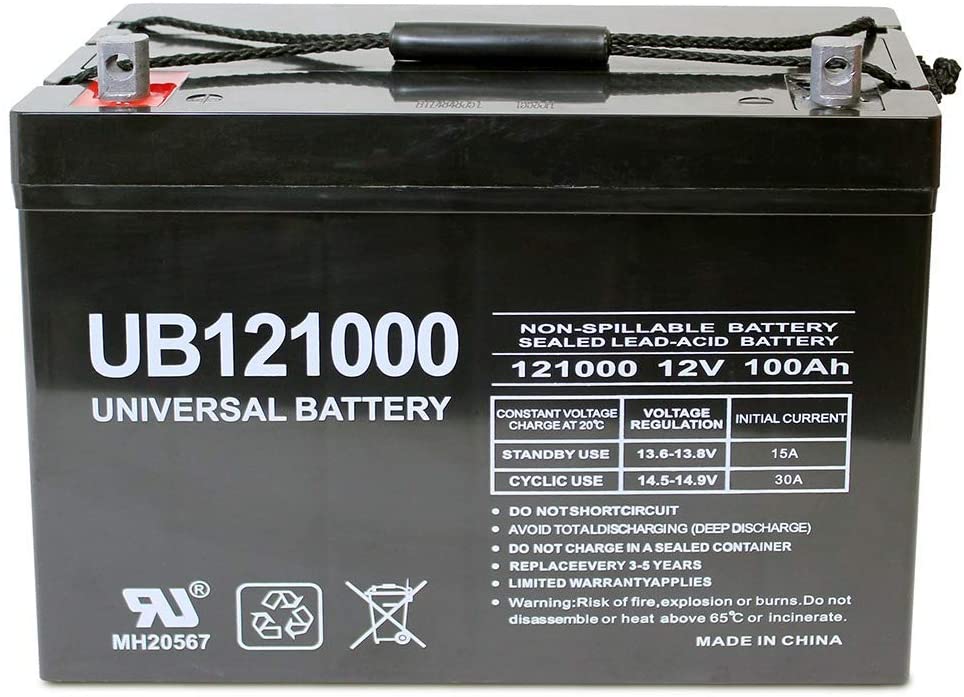Just like any other equipment, you need to take good care of your trolling motor battery so it serves you for long. The best part is that it is actually quite easy to do and you do not need to invest a lot of your valuable time.
So, how do you go about the whole process? Our guide is exactly what you need once you have purchased a reliable trolling motor battery.
Trolling Motor Battery Maintenance
How to conduct battery maintenance:
1) Identify which battery type you own:
- Maintenance-free: Don’t require fluid checks. These are usually the AGM and gelled acid types.
- Not Maintenance-free: Require fluid-checks.
Note: If your battery type is not maintenance-free, you’ll need to conduct fluid level checks. If the levels are askew, they need to be topped up with distilled water before plugging in the charger. Otherwise, the battery may not charge fully.
2) Clean your battery posts and connections:
Before you get into the cleaning process make sure your batteries are fully disconnected in order to avoid random electrical surges.
Gunk or rust on your battery will hinder its power transfer. The more gunk there is, the less power your battery will transfer to your trolling motor.
- Use a combination of battery post cleaner and sandpaper.
- You may also use a wire brush tool to shine up the posts and connections more efficiently.
3) Testing and charging:
- Before charging, you’ll need to check the charger’s manual.
- The batteries usually vary between 6, 12, and 24 volts. Select which one you’re charging and set the charger output accordingly.
- Set your voltmeter to DC and measure the volts.
4) Grease:
- Coat the terminal clamps with anti-corrosion spray or petroleum jelly.
- You may also apply dielectric grease on your battery posts and connections. This will ensure your battery remains efficient as the power will flow more freely.
Battery longevity and lifespan
Overcharging and undercharging batteries:
Both over and undercharging will harm your batteries and reduce their lifespan.
There are many chargers that keep adding power to your battery until you manually unplug them. It is much more efficient to opt for a charger that has an automatic shut-off system. The Minn Kota chargers are made to cut off the power or switch to trickle charge when the battery has reached its maximum charge capacity.
You should also avoid stratification in your batteries – it’s a process that occurs through continuous partial discharge and recharge. It forces the acid to sink to the bottom of the battery, which in turn disrupts the equilibrium of the chemicals in the cell. In order to keep everything balanced, you should drain your batteries completely and then recharge them to their maximum capacity as often as possible.
Beat the heat (and the cold):
- Exposing your batteries to extreme temperatures will either reduce their lifespan or ruin them completely.
- Allowing your batteries to freeze might cause irreversible damage, especially when they are not topped up. When your boat is not in use during winter, you should bring your batteries inside to maximize battery life.
- You should also avoid leaving the batteries inside your boat for extended periods of time when the weather is particularly hot.
Note: If a trolling motor battery is stored with less than 12.4 volts, it may form lead sulfate. This will undoubtedly affect the performance of the battery and reduce its lifespan.
How often you should check your batteries for damage:
- Every use: After every trip, you should quickly check your batteries for leaks, corrosion, and loose connections. This ensures that you know when your battery isn’t functioning at 100% immediately.
- Monthly checks: A thorough inspection of your batteries once a month will do wonders for you. This process would include taking them out of the box and doing a thorough cleaning. You would also need to check for corrosions in the cables and connections.
- Seasonal: The end of the season brings with it some extra maintenance needs. You’ll want to ensure your batteries are fully charged and topped up before putting them away for storage for the long winter hibernation. It’s also important to store them in an appropriate place. You should opt for a shelf instead of dirt or concrete floors.
Tips
- Never use tap water to top up your batteries as it can contain contaminants. You should use distilled water or battery acid.
- Make sure to wear proper protective equipment such as goggles and rubber gloves while handling batteries.
- Let your battery cool off after a full charge. This will allow the residual heat to dissipate before you put it to use.
- Pay close attention to how your trolling motor sounds when you start your engine. A trolling motor that doesn’t last as long as it used to can be indicative of weakening batteries.
- Investing in an automatic charger will allow your batteries to last longer. They ensure that the charge gets converted to a trickle charge or completely shuts off so that your batteries aren’t overcharged.
- Check your batteries for damage after you take them out of storage.
FAQs
- Could an AGM charger damage my battery?
Ans. AGM chargers are a lifesaver when you’re out boating and need to charge your battery quickly. However, the speedy charge makes the battery more prone to being damaged. In order to avoid this, you can set them to their minimal amperage setting.
2. How long does a trolling motor battery last?
Ans. This depends on how well you take care of it. With proper maintenance, your battery might last for five seasons or even more than that if you have exceptional charging practices.


